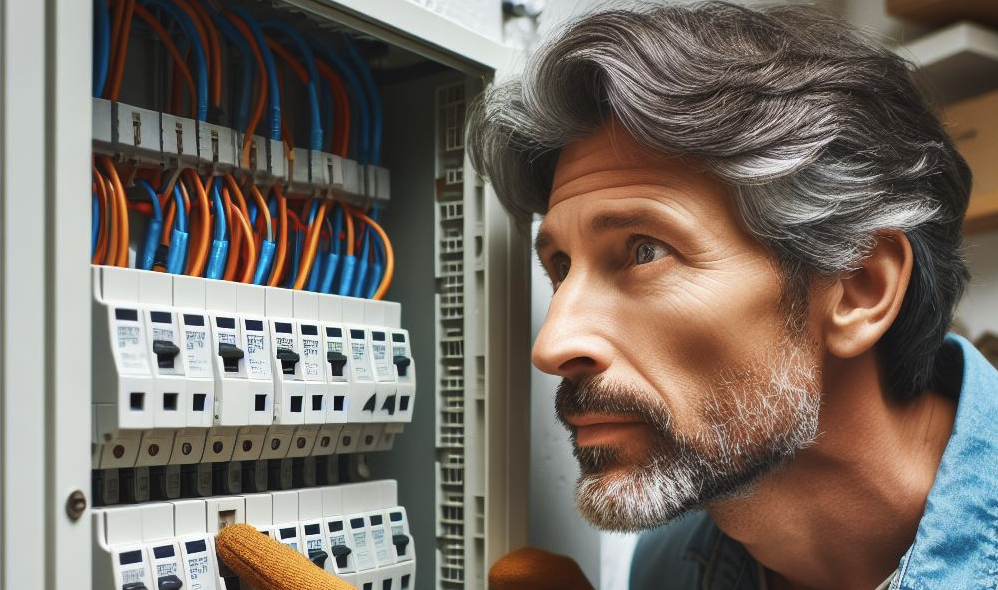Published By: Marc Edwards | Last updated on April 29, 2024 and reviewed by Sean Hudson
Is your surge protector often turning off by itself?
This can be frustrating.
Yet, you can try some fixes before you give up and get a replacement unit.
Without much ado, let me explain why surge protectors shut off and how to fix them.
Understanding how surge protectors work is key to fixing them.
They protect devices from power surges – by redirecting extra power to the ground wire.
Why am I telling you this?
Knowing this helps with troubleshooting.
Knowing these issues makes it easier to find a solution.
You can easily identify electrical overload by the following signs:
- lights flicker
- outlets feel warm
- frequent breakers trip
How to Reset After Surge Protector Tripped
If a surge protector trips, it is important to know how to reset it.
This restores its power protection function.
The reset process is straightforward – it involves several steps for proper function.
Here is how to reset your surge protector:
- Unplug all connected devices: First, unplug all device from the surge protector. This prevents power surges during reset.
- Wait for a few seconds: Next, wait a bit after unplugging. This lets the surge protector reset completely.
- Plug the devices back in: Now, plug your devices back in. Ensure they are in tightly.
- Test the surge protector: Try turning the surge protector back on. If it works and your devices run fine, the reset was successful.
4 Common Causes Why Surge Protector Keeps Turning Off
If your surge protector keeps shutting off, finding out why is important.
As mentioned earlier, short circuits and overloading are the two main causes.
Short Circuits and Their Impact on Surge Protectors
A short circuit happens when wires touch or are faulty.
It can occur when an unintended path is formed in the circuit, allowing electricity to flow with little to no resistance, which can happen due to wires touching or being damaged.
This causes too much electricity to flow suddenly which can cause the surge protector to shut off, risking harm to your devices.
Fixing a short circuit needs finding its source – check all wiring for damage.
Identifying and repairing short circuits can be hazardous and typically requires professional skills and tools – which will involve inspecting wiring, using a multimeter to test for continuity and resistance, and replacing damaged components.
Electrical Overload Protection: Signs and Solutions
Overloading a circuit happens when you plug in too many high-power devices.
This can cause your surge protector to turn off to prevent overheating and potential fire hazards.
It’s important to know your devices’ voltage needs and not plug too many into one surge protection power strip.
Let’s look at some ways to fix electrical overload:
- Redistribute the load: Check the power needs of your devices. Spread them across different circuits or use more surge protectors. This helps avoid overloading one circuit.
- Upgrade your circuit: Too many electrical overloads? Think about updating your circuit or adding more. This deals with the extra power they need.
- Get advice from an electrician: Not sure about the overload’s cause or how to fix it? It’s best to ask a professional. They can check your system and give the right advice to solve the problem.
Knowing the signs and taking the right steps will keep your surge protector working well.
Tripped Circuit Breakers
Circuit breakers are essential in any electricity setup.
They stop devices from getting damaged by cutting power when there’s too much electricity.
The circuit breaker may have tripped if your surge protector keeps turning off.
Here’s how to check:
- Find your circuit breaker box.
- Locate the breaker for the surge protector’s circuit.
- Flip the breaker back on if it’s tripped.
- Check if the surge protector stays on now.
If resetting the circuit breaker doesn’t fix the issue, you may need to look deeper into the problem.
Improper Grounding Can Result in Surge Protector Shutdown
Improper grounding is a big problem for surge protectors.
If the grounding is weak or wrong, it might cause the surge protection device to malfunction and cause it to shut down.
Bad grounding means the protector can’t send extra voltage to the ground during voltage surges.
Faulty wiring, loose parts, and wrong grounding rods are common grounding problems.
A skilled electrician must set up the grounding correctly to avoid these.
Benefits of Proper Grounding |
Consequences of Improper Grounding |
|---|---|
|
|
How to Troubleshooting Unplanned Surge Protector Shutdowns
Dealing with surge protection power strip shutdowns is vexing, especially when many devices rely on it.
Follow the steps below to troubleshoot unexpected shutdowns of surge protection devices:
- Check for Overloaded Circuits: Too many devices can overload a power strip. Make sure the combined electrical usage doesn’t exceed the strip’s limit. Spread out your devices on more strips or outlets to avoid overloading.
- Inspect the Power Strip for Damage: Any signs of damage, like frayed wires or burnt outlets, can lead to shutdowns. Look closely at the power strip for these issues. If you spot any, stop using it and get a new one.
- Eliminate Potential Electrical Interference: Nearby electrical devices or appliances can sometimes cause the strip to shut down. Keep the power strip away from sources of interference, like big appliances or other electronics.
- Check the Power Source: The AC outlet itself might be the problem. Try plugging the strip into a different outlet. If it stops shutting down, the original outlet might be bad and need fixing by an electrician.
- Contact the Manufacturer: If nothing else works, contact the manufacturer support line for further support. They might give more tips, or if it’s faulty, a replacement.
Always be careful with electricity. If you don’t feel comfortable dealing with it, get help from a professional.
Safety first!
Professional Intervention: When to Call an Electrician
Troubleshooting surge protector issues yourself can work, but sometimes it’s better to call a professional.
They have the skills and knowledge for a detailed check and resolve the unexpected shutdown issue.
If trying common fixes doesn’t stop your surge protector from shutting off or having problems, it’s time to get help (or buy a replacement unit).
An electrician will look at your whole electrical system, uncover hidden problems, and fix them properly.
Getting an electrician can save you from time loss and help prevent more harm to your devices.
They know how to find and fix hard wiring or system problems.
This keeps you safe from electrical risks and ensures your system works well.
They will keep your mind at ease by ensuring your system is safe and reliable.
If hiring an electrician is too costly, replacing the surge protection device will be cheaper.
Best Practices to Lengthen Surge Protector Lifespan
To make your surge protector last, there are more things you can do:
- Avoid Excessive Power Loads: Don’t plug in more than your surge protector can handle. Too much can make it shut off, risking your devices.
- Use Surge Protectors with Sufficient Joule Ratings: Look for high joule ratings. This means the protector can handle big power surges better, keeping your devices protected.
- Replace Outdated or Damaged Surge Protectors: Check your surge protector often. If it’s old or not working right, replace it. A good surge protector is vital for keeping electronics safe.
Tip |
What to Do |
|---|---|
| Inspect Regularly | Check for damage and loose parts on your surge protector often. |
| Ensure Proper Grounding | Make certain your surge protector is grounded correctly to protect your devices. |
| Clean and Dust-Free | Wipe your surge protector often to remove dust and keep it working well. |
| Avoid Overloading | Don’t plug too many high-power devices in, as this can damage the protector. |
| Choose High Joule Ratings | Select surge protectors with high joule ratings to safeguard your electronics better. |
| Replace Outdated or Damaged Protectors | Change out old or broken surge protectors to maintain reliable protection. |









